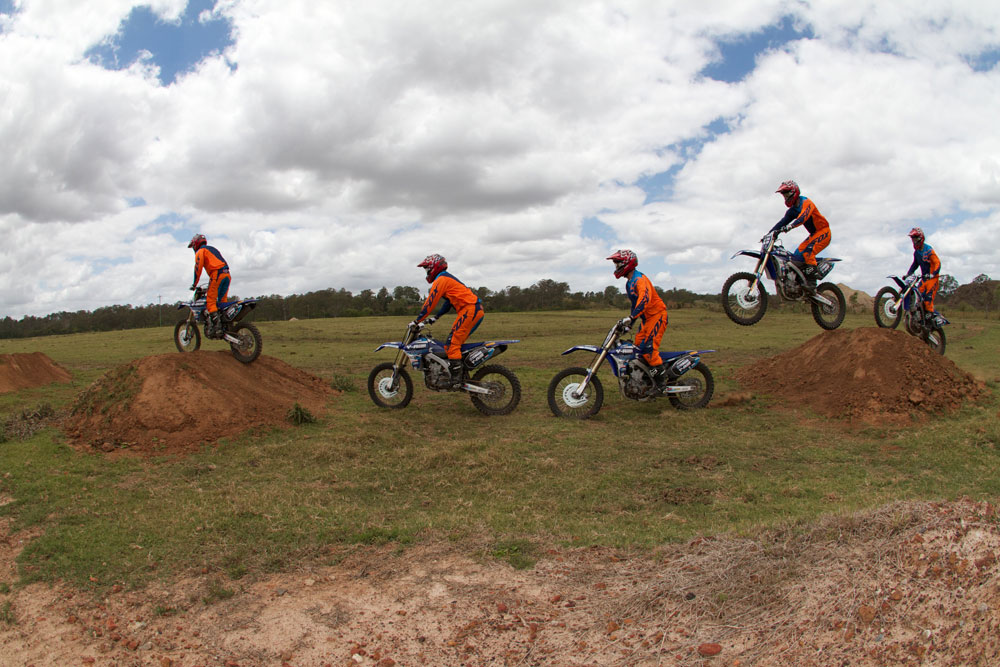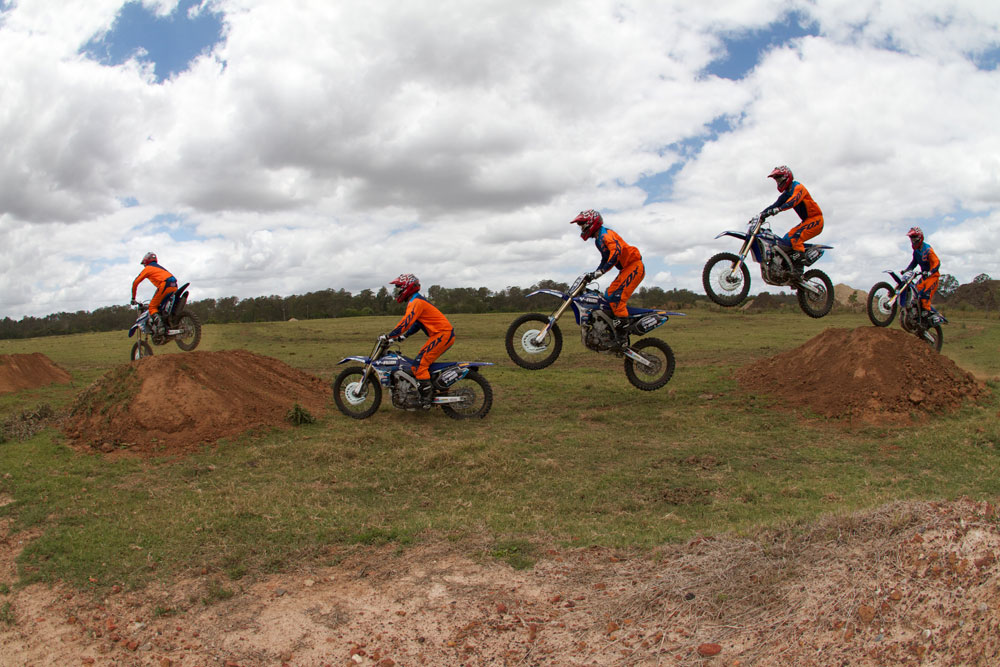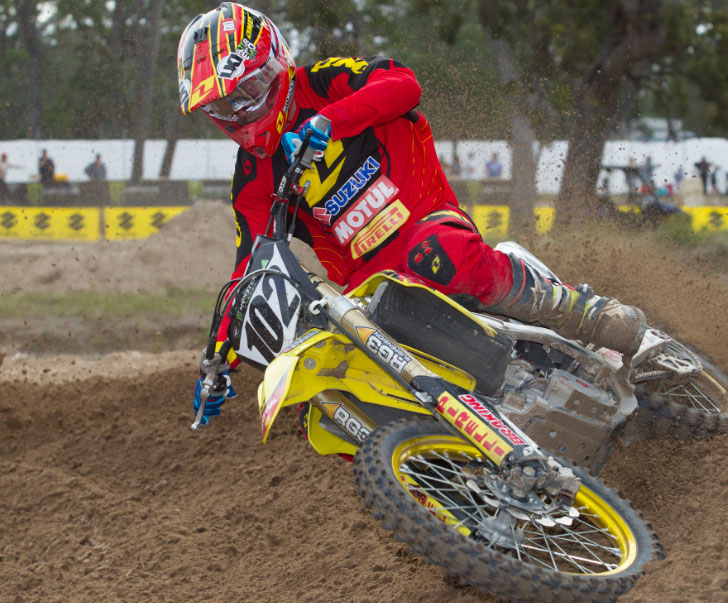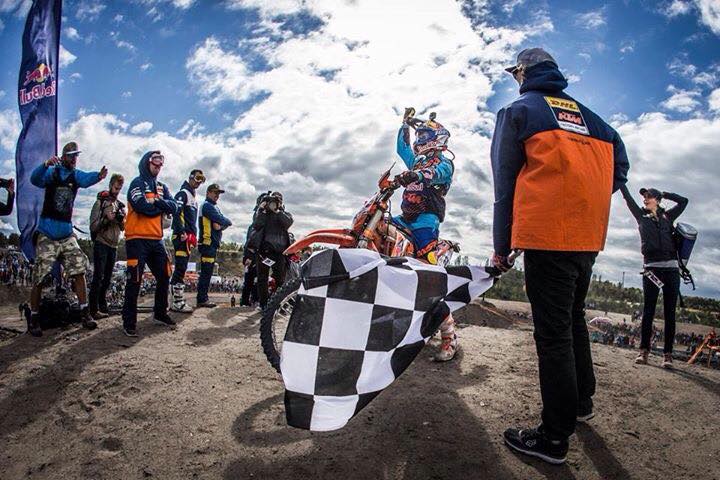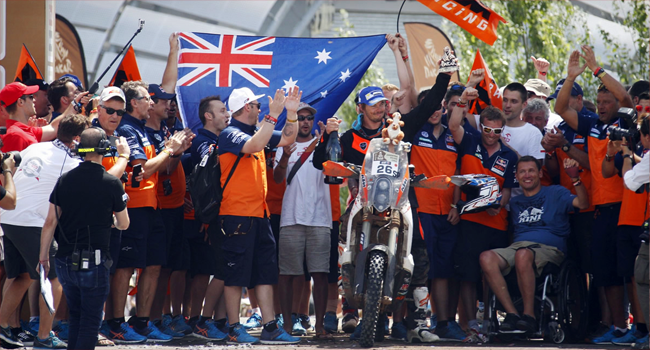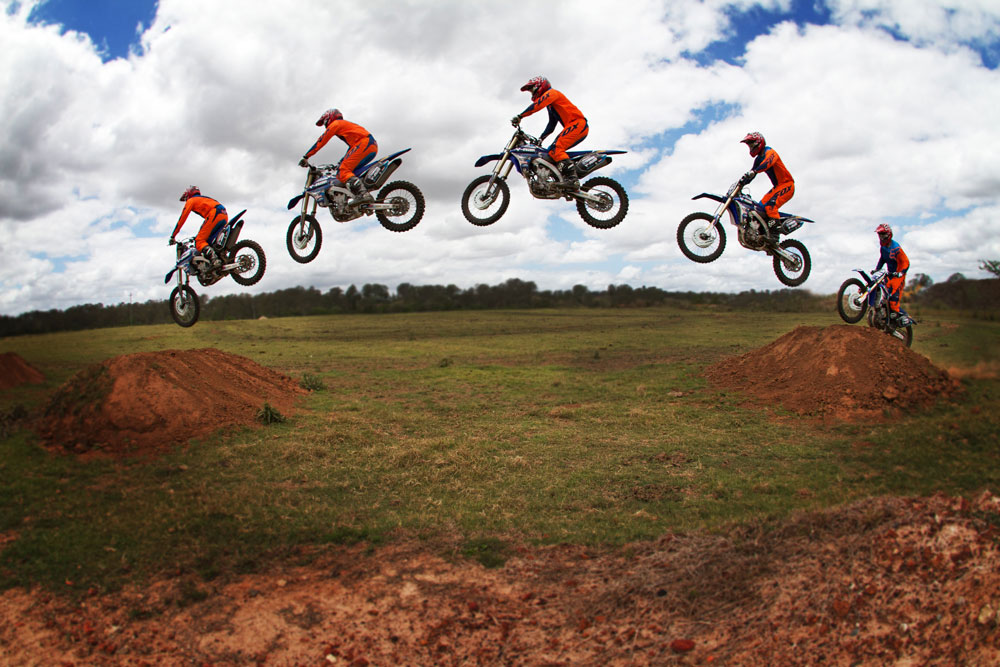
Double jumps can be an intimidating obstacle to negotiate on your dirt bike. Let’s look at how you can build your confidence and be sailing over the gap in no time
STORY BY SHANE BOOTH | PHOTOGRAPHY BY MATT BERNARD
Even if you consider yourself a confident jumper, the first time you come across a double jump you need to remember it’s very different from hitting a table top or single jump. You need to judge your jumping distance pretty accurately; sometimes you have a little room to play with, but other times landing short or long will have serious consequences. It’s all about checking out the double, how big it is, what the up ramp is like, if the down ramp is forgiving at all, and what is directly following the landing. These factors will all affect how accurate you need to be and probably also how nervous you’ll be the first time you go for it.
SIZE IT UP
Take your time to look at how big the double is. If it’s the first time you’ve attacked one, you might roll it 50 times before you even think about jumping it. Some riders may jump it the first lap they come around to it, but don’t get caught up in peer pressure. It’s all about experience and pros who ride this stuff all the time can judge the majority of obstacles just by looking at them. It doesn’t mean you should also be able to. Once you are comfortable with the up ramp, start to jump into the middle of the two jumps but be careful as you build confidence that you don’t jump too far and land in the face of the second one — that’s not the idea at this point. Landing with your front wheel just short of the second jump is as far as you want to go. This should start to give you an idea of what speed you will need to jump the double and also how hard the landing may be if you come up short or go long.
THE BUILD-UP
If jumping as close to the down ramp as you can get still does not give you the confidence to try the jump, there is one more technique you can use to help you judge the distance of the double. It’s important to only use this if it’s safe and if there is room. It involves jumping off the side of the track and landing on the flat ground next to the down ramp. Obviously it is very important to check the area you will land in and also the run off from the landing. Make sure you don’t land in the middle of another lane of track. You don’t want to do this to avoid a crash trying to jump the double, only to end up on your head because you landed on a big boulder or in a hole on the side of the track. Once you feel like you have the distance, always remember you are jumping on an angle to miss the down ramp, so when you straighten up your line with the down ramp, you actually shorten the jumping distance. Be careful not to jump long.
TIME TO HIT IT
By this point you should know if you are going to hit this thing or not. I believe most riders will know whether they should or shouldn’t attempt the jump — it’s just whether they listen to that little voice or not. You’ll always be a bit nervous the first time you try a double jump, but if you are scared out of your mind when you come to it but you think, what the hell, that’s when you’ll probably end up with a trip to the ER. If there is room after the jump, it doesn’t hurt to over jump a double the first time. This is usually a better option than coming up short. Once you clear the second jump, ease it back until you land on the back side of the down ramp like you should. Some doubles are too big and you really need to get it spot on first go, as short or long will end you up in trouble. Play with caution on jumps this size.
CONTROL USE AND BODY POSITION
It’s all about keeping your body central on the bike all the way up the face of the jump, through the air and on the landing. If you look in the sequence you can see how the bike is angled up the face of the jump and the handlebars are near my waist. Once I’m in the air, the bike starts to angle over for the down ramp and you’ll notice how I extend my arms and I end up near the rear of the seat by the landing. What you are trying to do is let the bike do all the angle changing and you try to keep you body in the centre. Make sure you are strong on the bike for the landing — don’t collapse down on the bike. Most double jumps will have steep take-offs so it’s important to drive the bike all the way up and off the top of the up ramp. Once you are in the air, you can back the throttle off and then get back on it for the landing.
BRACE FOR IMPACT
If you are jumping doubles often, at some point you are probably going to get it wrong. You’ll know the second you leave the up ramp so don’t panic because there are a few things you can do to try to save yourself. If you are coming up short and the front end isn’t low, and you are going to land with the frame rails on top of the down ramp, here’s what you can do. Brace yourself and squeeze the bike between your legs — don’t lean back as this will just load you up like a catapult. Keep your weight central for the impact so if the bike kicks, it doesn’t hit you straight in the butt and send you over the bars. The majority of the time you should try to land and apply the brakes on impact. This helps stop the bike from getting away from you off the jump and it gives you the best chance of getting under control before the next one. If you are over-jumping the down ramp, brace for the hard landing and make sure you land with an aggressive amount of throttle as the rear wheel touches down. You want to make sure you land rear wheel first in this case too so a few big revs in the air should help bring the front wheel up.
ADJUST YOUR ANGLE
If your body position is correct, you shouldn’t need to adjust anything in the air. Sometimes, though, the take off isn’t perfect or your body position may be slightly off. If the front wheel is too high in flight, pull the clutch in and then stab the rear brake. When the rear wheel stops, the front of the bike will angle down. Just be careful when you try this as it could cause you to have a problem rather than fix one. If you tap the rear brake and forget the clutch, you’ll stall the bike mid air. If this happens, pull in the clutch and keep it in for the landing. If you are front wheel low in the air, lean back and hold the throttle wide open. This doesn’t work as well as the rear brake does to get the front down, but it will help. Usually it will slow down the rotation enough to make it to the ground before you are too far gone.


